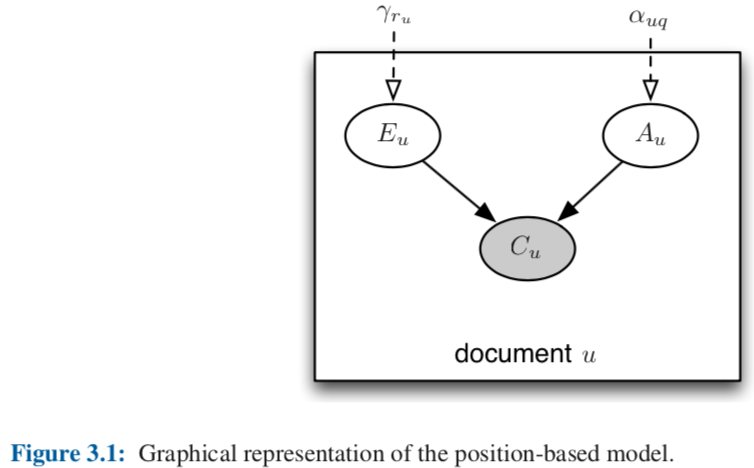click model terminology
Click models describe user behavior on a search engine result page (SERP).
Motivation
Click model is to model the user’s behaviours in web search, that is to say, we want to understand what factor may lead to user’s click or skip. Then it may be easier to predict click through rate. Most importantly, it can be used to infer document relevance from clicks predicted by a click model.
Observation
The whole observation process is a query session: from a user enter a query in the search engine, then preview the whole result page, click on one or several items or not, until either enter another query or stop the interaction.
The source data is the query log during a period of time. It may contain: user id, query, query timestamp , if there was a click, the rank of the clicked item, the URL of the clicked item…
For example, part of the query log released by AOL in 2006:

Aim
click models define dependencies between the following events and aim at estimating full or conditional probabilities of the corresponding random variables.
- E: a user examines an object on a SERP;
- A: a user is attracted by the object’s representation;
- C: an object is clicked;
- S: a user’s information need is satisfied.
and the possible aims to predict are :
- a set of events/random variables;
- a directed graph with nodes and edges referring to events and relationships;
- conditional probabilities in the nodes of the graph;
- a correspondence between the model’s parameters and features of a SERP and user’s query.
During this process, we will often depict a click model as a graphical model. The graph can be illustrated like this: the dependencies between a document e being examined, getting the user’s attraction and being clicked.

The definition of Bayesian Network is by Koller and Friedman:

Reference:Aleksandr Chuklin, Ilya Markov, and Maarten de Rijke. 2015. Click Models for Web Search. Synthesis Lectures on Information Concepts, Retrieval, and Services (2015), 1–115.
Goodbye!
